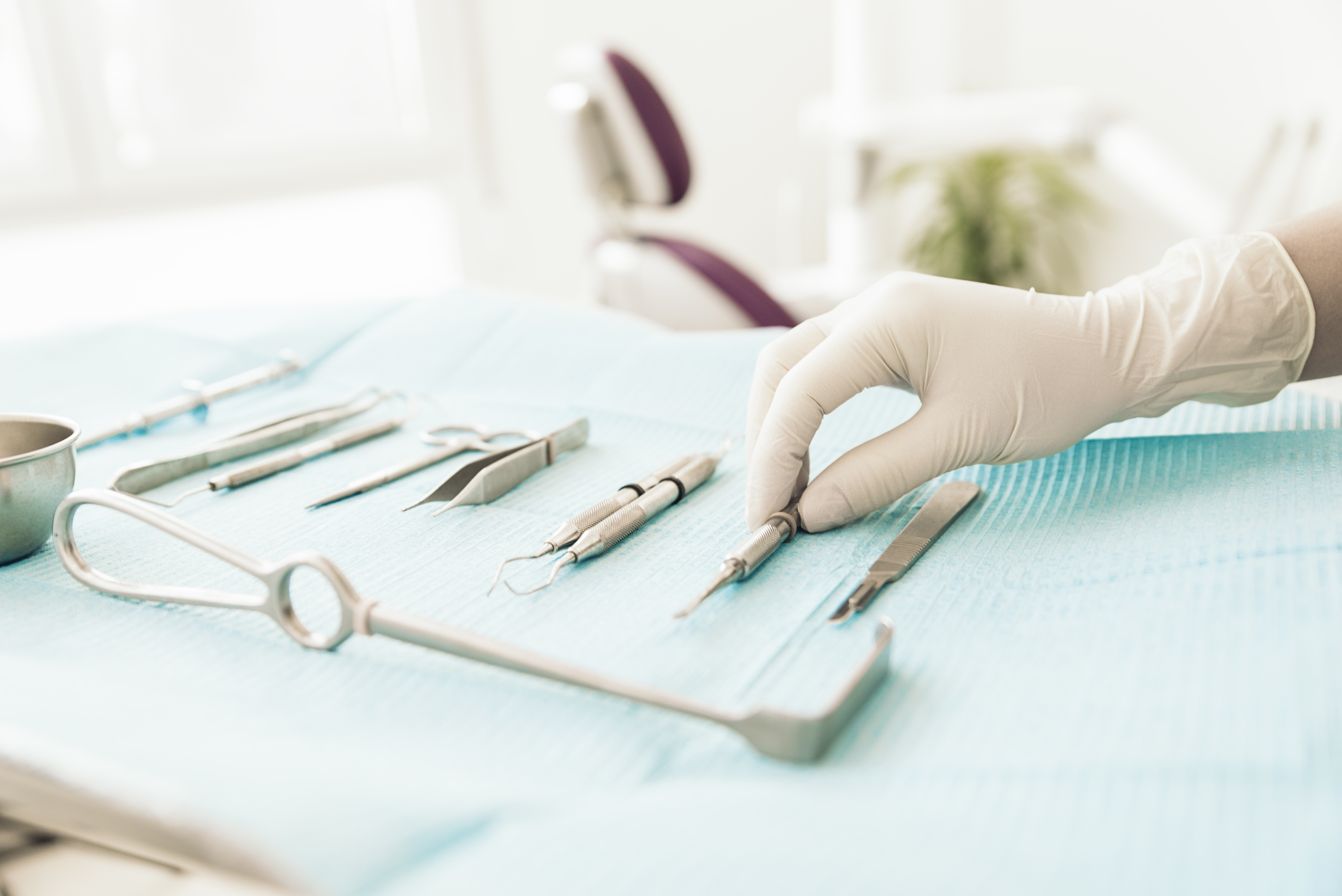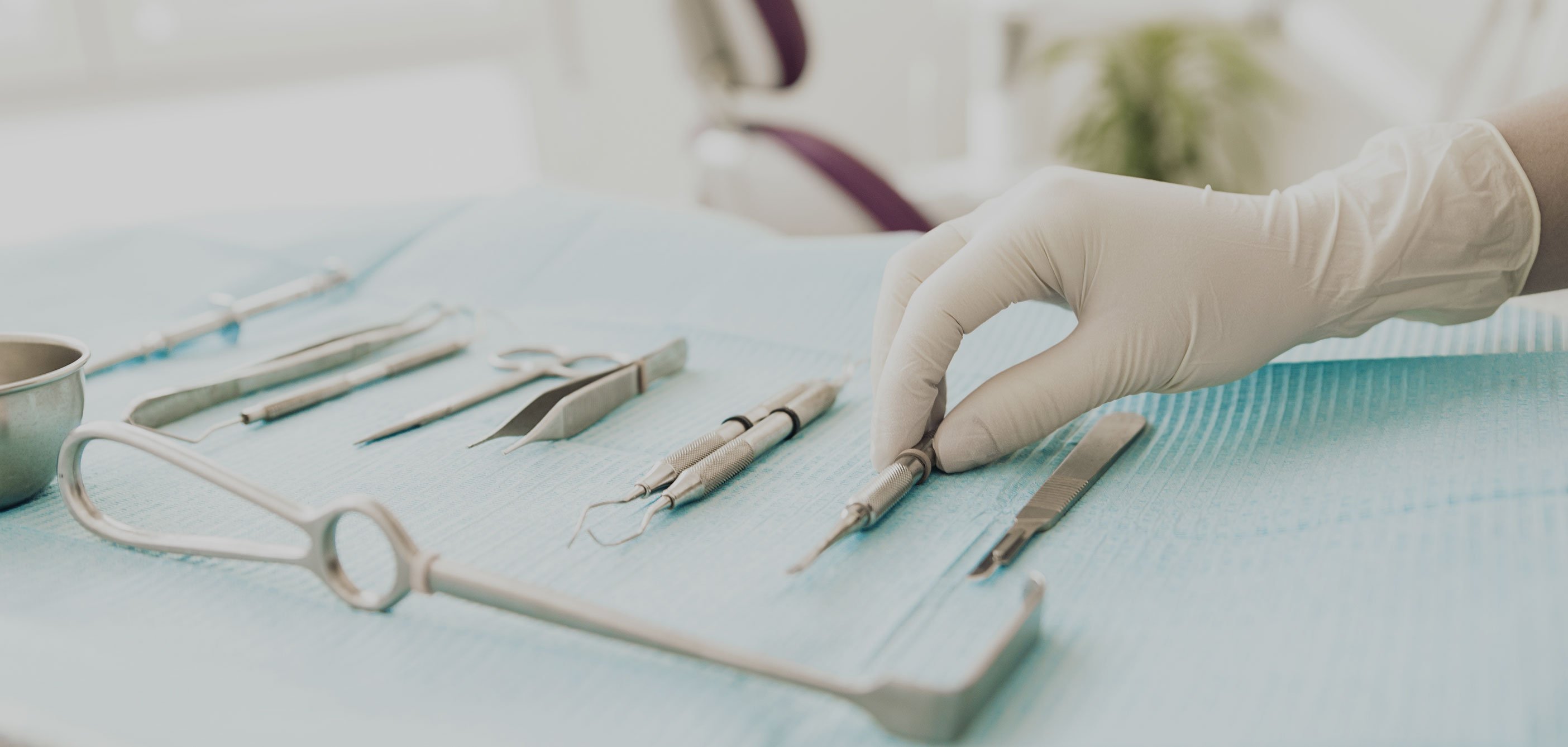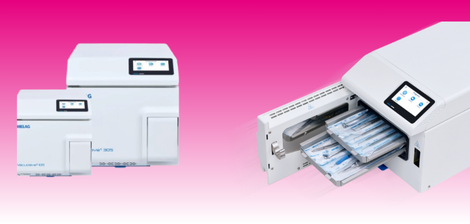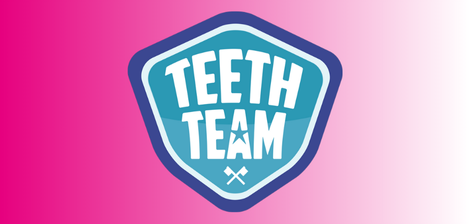What Hand Instruments Should you use?
Dentistry has had to develop over the years to meet increasingly high levels of safety and infection control expectations. Additionally, patients now expect a more comfortable and speedier experience in the chair. Thanks to huge innovation within the profession, the hand instruments that clinicians use in everyday practice to examine, manipulate, treat, restore, and remove teeth are more efficient than ever, with their operating costs vastly reduced. Many single-use items come in kit form and are now either recyclable or biodegradable, removing the time, cost and risks associated with sterilising or handling sharps and offering options that are kinder to the planet.
What are the different types of hand instruments and what are they used for?
Below is a list of commonly used hand instruments.
- Angled college tweezers: Used to place cotton wool between cheek and gum
- Briault probe: Used to detect caries on mesial and distal surfaces
- Cotton forceps: Use to move cotton pellets, matrix bands, wedges etc.
- Mouth mirrors: Helps with indirect vision, light reflection on various surfaces and retraction of soft tissues.
- Periodontal probe: Measures pocket depths
- Retractor: Used to move lips, tongue and cheeks
- Straight probe: Used to examine cavities in the dentine region and check margins of filings
- Chisel: Used to break down the enamel margin and refine the cavity preparation
- Excavator: Used to remove soft dentine, decay and debris
- Gingival margin trimmer: Used to cut enamel
- Gracey curettes: Used to remove supra- and subgingival calculus
- Luxator periotome: Periodontal ligament knife used for performing extractions.
- Scaler: Used to scrape hard plaque
- Amalgam carrier: Used for carrying and dispensing amalgam filling materials
- Amalgam plugger: Used to compact amalgam
- Amalgam well: Designed for easy amalgam handling.
- Ball burnisher: Used for placing and contouring composite material
- Carver ward: Used to shape amalgam and composites
- Condenser: Used to pack down amalgam into the preparation
- Crown and bridge remover: Used for permanent removal
- File: Used to clean and shape root canals
- Forceps: Used for extractions
- Gingival cord packer: Designed to achieve accurate cord placement before inserting impression material
- Gradia brush: Used to apply composites
- Halsted-Mosquito hemostat: Used to clamp off blood vessels, remove small root tips and grasp loose objects
- Hachet: Used for cavity preparation and removing hard caries
- Hoe: Used to remove supra- and subgingival calculus
- Needle holder: Used to prevent a needle from rotating or slipping
- Plastic filling instrument: Used for placing and contouring restorative materials
- Spatula: Used to mix sealing materials
- Suture curved/straight scissors: Used for suture removal

Single use vs reusable – what’s best?
Single-use instruments have played a part in this revolution in dentistry and offer significant benefits, primarily the reduction in the risk of contamination and cross infection.
Single-use hand instruments means:
- Instruments are always clean and readily available
- Mitigates risk of cross-infection
- No cost associated with decontamination – labour or equipment/maintenance
- Frees up staff from operating tasks to focus on patients
- Less time focused on regulatory expectations
- Less stress regarding fear of patient complaints.
Autoclavable hand instruments means:
- Tried and tested over the years
- Traditionally, considered reliable and good quality
- Designed to withstand thermal disinfection and steam sterilisation.
Hand scaling vs ultrasonic scaling
Innovation drives progression in dentistry and the advent of the ultrasonic scaler drastically changed the way scaling was delivered, making it more comfortable for clinicians and patients. Unfortunately, the pandemic saw a return to conventional hand scaling due to the limitations on aerosol-generating procedures and many hygienists found themselves in scenarios that served as a reminder of how much the landscape had changed in their everyday working practices. This manual method of removing plaque has long been associated with repetitive strain injuries (RSI), demanding as it does repeated actions that can often lead to hand fatigue. This traditional therapeutic method of scaling inevitably puts pressure on clinicians due to the fact that they have to hold delicate hand tools in continual motions – leading to hand or arm pain for them, and lengthier appointments for patients, which is why ultrasonic scaling has long been the method of choice for many.
Ultrasonic scaling offers several advantages over hand scaling for both practitioner and patient.
If patients lie at the heart of any excellent clinical practice, then primarily ultrasonic scaling provides the most comfortable (and most effective) option for their treatment. It is also a time saver, which means scaling is achieved in a shorter timeframe, helping to achieve a more profitable way of working as well as reducing time spent in the chair for patients.
According to research, ultrasonic scaling is as effective as manual scalers.
Operating on the most efficient frequency for optimum delivery, removing hard calculus is rapid, gentle – so less damaging to the surface of teeth – and therefore safer for the patient. And because the tips are small and come with LED lighting for better visibility, ultrasonic scalers can access deeper into pockets and disrupt bacteria, ensuring a dramatically improved performance.
And it is kinder to practitioners, too. Work-related injuries are a major concern in dentistry – and any ergonomic-friendly instrument that reduces the risk of long-term health issues, whilst delivering optimum care, is surely welcome.



